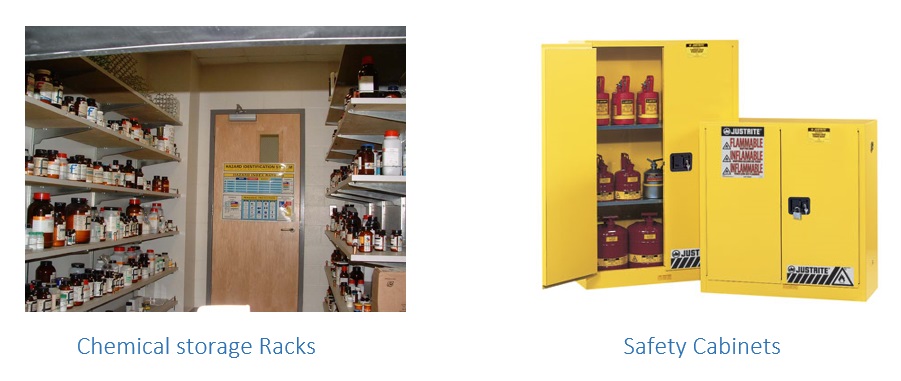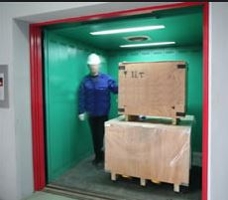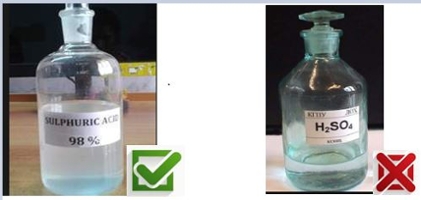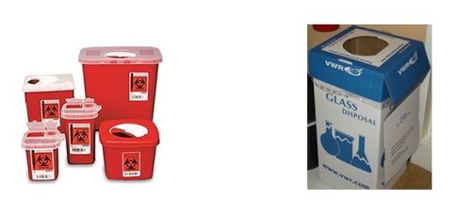WASTE MANAGEMENT
Chemical Handling & Storage- General Handling procedures:
- Obtain and review Safety Data Sheets (SDS) before ordering and using chemicals. Ensure that the material can be safely procured, stored, used, and disposed of.
- Know the hazards associated with materials you are using.
- Be prepared for emergencies and know what action to take. Assure that necessary supplies and equipment are available for handling small spills.
- Know the location of safety equipment such as emergency shower, eyewash, fire extinguisher, fire alarm, and emergency telephone numbers.
- Purchase minimum amounts of hazardous materials necessary to accomplish work and dispense only amounts necessary for immediate use.
- Use hazardous materials only as directed and for their intended purpose.
- Never smell or taste a hazardous chemical.
- Avoid direct contact with any chemical, use protective equipment to avoid exposure, and review SDS for specific recommendations for each chemical used.
- Ensure emergency contact information is posted at the lab entrance.
- Ensure all containers are labeled.
- Label all secondary containers with chemical name and hazard information.
- Assure ventilation is adequate for the materials you are using. Where possible, handle all materials in a chemical fume hood.
- Store chemicals in compatible categories.
- Only permit reactions to run unattended when the reaction is well understood, provisions are in place to contain toxic substances in the event of a utility failure, and emergency contact information is posted on the door.
- Dispose of waste properly according to EHS’s “Waste Management Guidelines and Procedures Manual.”
- When transporting chemicals outside the lab, use precautions to avoid dropping or spilling chemicals. Use bottle carriers for glass containers and use carts with edges to prevent containers from falling off the cart and breaking.

Safe Chemical Handling Video Illustration







